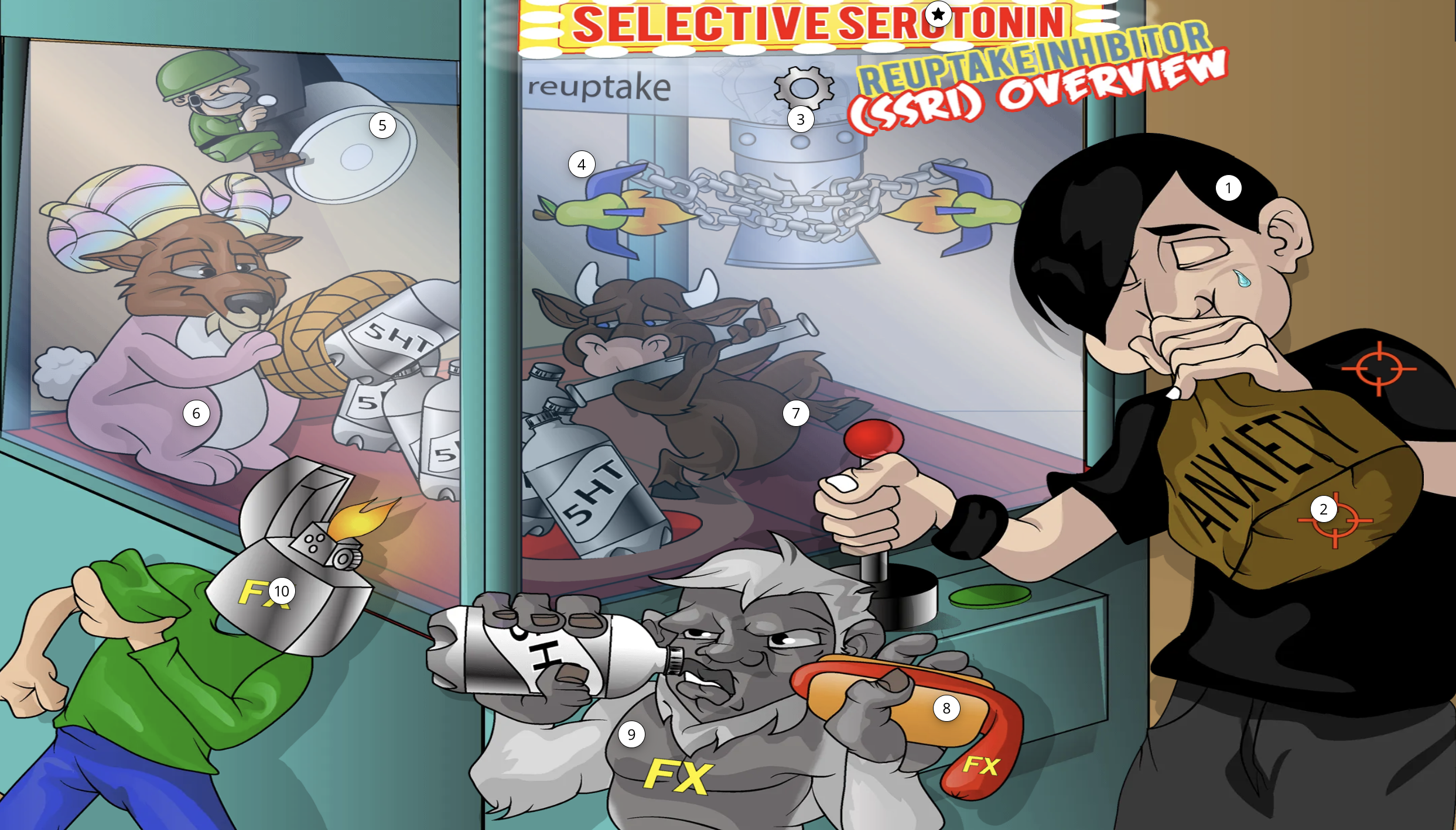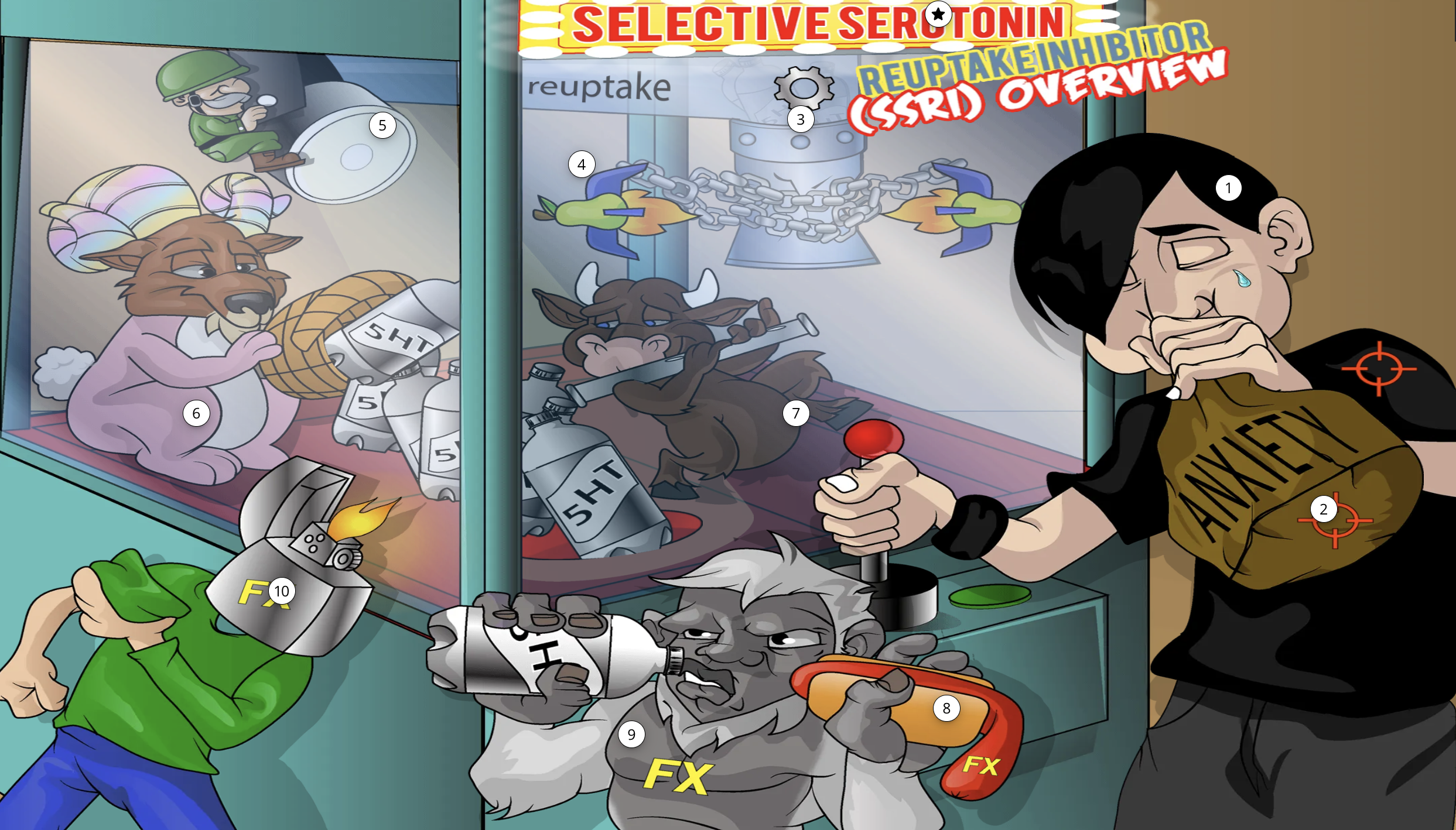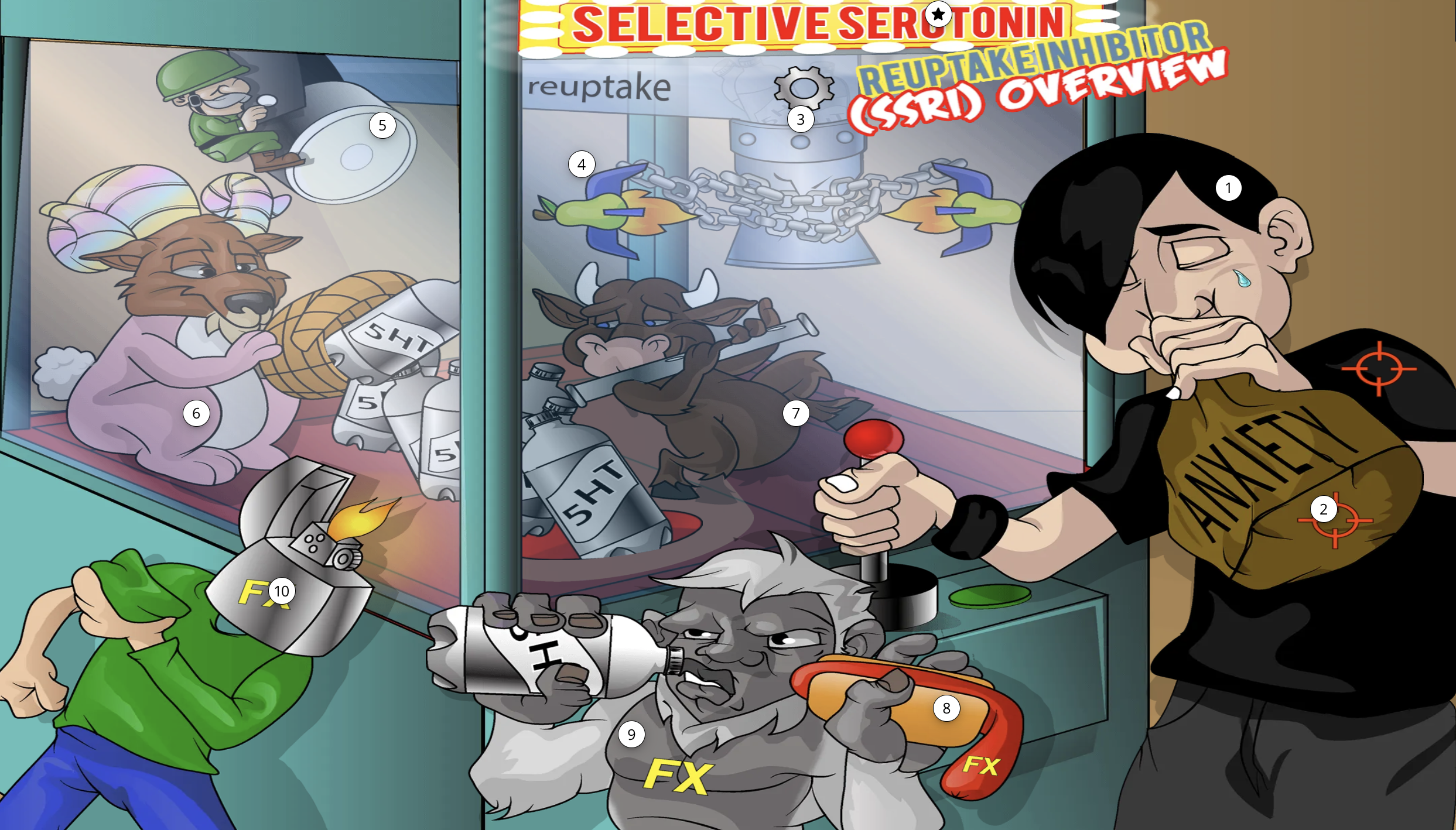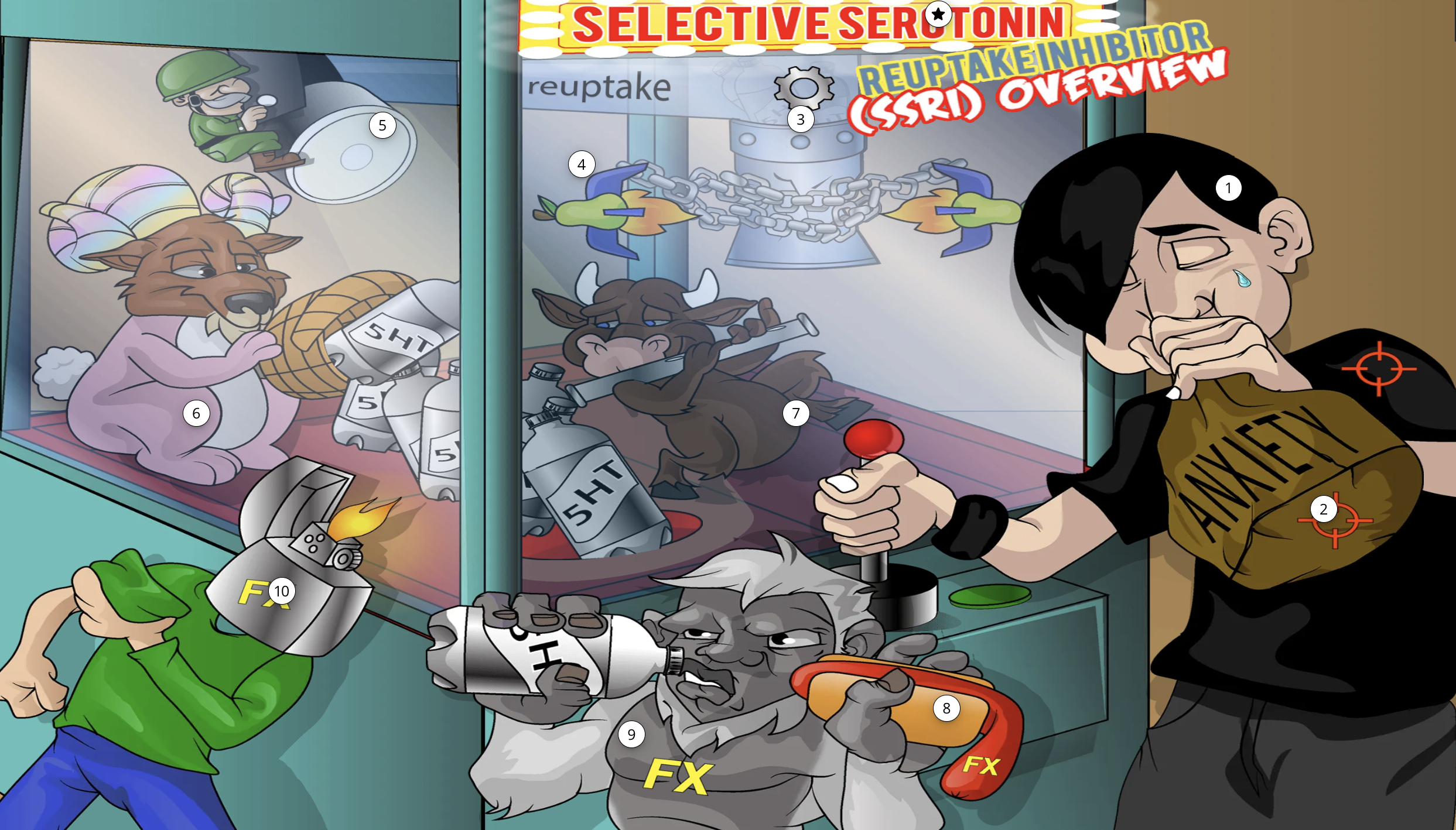Katzung Chapter 30: Antidepressant Agents, Chapter 31: Opioid Agonists and Antagonists and Chapter 32: Drugs of Abuse
1/53
There's no tags or description
Looks like no tags are added yet.
Name | Mastery | Learn | Test | Matching | Spaced |
|---|
No study sessions yet.
54 Terms
Mu opioid receptor
Stimulation produces , euphoria, respiratory depression and physical dependence, analgesia
Kappa/opioid/Delta opioid receptor
Stimulation produces analgesia
Tolerance
With frequently repeated administration of therapeutic doses of opioids there is a gradual loss in effectiveness
Physical Dependence
Occurrence of a withdrawal or abstinence syndrome when the drug is stopped or an antagonist is administered
Hyperalgesia
Persistent administration of opioid analgesics has been observed to increase the sensation of pain
Morphine
Strong naturall occuring opioid agonist from the poppy plant (Papaver somniferum),
binds w/ high affinity to the mu opioid receptor
Buprenorphine
High binding affinity but low intrinsic activity at the mu opioid receptor,
antagonist at the delta and kappa receptors,
combined with nalaxone for the treatement of opiate addiction
Neuraxial
Injection of an anesthetic drug into the fatty tissue that surround the nerve roots (epidural) or into the cerebrospinal fluid (spinal)
Fentanyl
available as a sustained release,
transdermal patch (3 days),
indicated for the management of persistent unremitting pain,
Strong opioid agonist,
Fentanyl
b/c of respiratory depression…
FDA recommends a fentanyl patch (25 mcg/h) be reserved for pt w/ established oral morphine requirement of at least 60 mg/d for 1 week or more
Butorphanol
Kappa receptor agonist, may be a mu receptor partial agonist or antagonist, available as intranasal preparation
Nalaxone
Opioid antagonist, used to treat opioid overdose, has a short half-life so it needs to be administered frequently
Heroin Hydromorphone Levorphanol
Strong opioid agonist
Methadone
Strong opioid agonist,
longer half-life,
used for detoxification
Codeine Oxycodone Hydrocodone
Mild to moderate opioid, partial agonist that is usually combined with aspirin or acetaminophen
Loperamide
Mild opioid agonist, used for diarrhea
Tramadol
Centrally acting analgesic,
blocks serotonin reuptake
weak mu receptor agonist
Dextromethorphan
Oioid agonist with antitussive actions but little or no CNS effects, not for use in children under 6 years old
Naltrexone
Opioid natagonist with a longer duration of action used in alcohol and nicotine abstinence programs
Ziconotide
Blocks N type,
Vg Ca channel
prevents release of NT,
apprved for chronic pain (intrathecally)
Methylnaltrexone
Opioid antagonist, used to treat opioid-induced constipation
Alvimopan
Opioid antagonist,
used to treat postoperative ileus
Tricyclic antidepressant
Block the reuptake of norepinephrine and/or 5-HT into the presynaptic membrane
Amitriptyline
Tricyclic antidepressant
Imipramine
Tricyclic antidepressant
Selective Serotonin Reuptake Inhibitors
Greater ability to block the reuptake of serotonin (5-HT) compared to norepinephrine reuptake
Fluoxetine
Antidepressant, Selective Serotonin Reuptake Inhibitors
Eating disorders esp. bulimia nervosa
potent inhibitors of p450 2D6 “E” (breaks drug in liver)
Premenstrual dysphoric disorder (PMDD)

Paroxetine
Antidepressant, Selective Serotonin Reuptake Inhibitors
Discontinuation syndrome
potent inhibitors of p450 2D6 “E”

Sertraline
Antidepressant, Selective Serotonin Reuptake Inhibitors
Premenstrual dysphoric disorder (PMDD)
Discontinuation syndrome

Citalopram
Antidepressant, Selective Serotonin Reuptake Inhibitors
Escitalopram
Antidepressant, Selective Serotonin Reuptake Inhibitors

Fluvoxamine
Antidepressant, Selective Serotonin Reuptake Inhibitors
Venlafaxine Desvenlafaxine
Antidepressant, blocks reuptake of both norepinephrine and serotonin (ven)
Levomilnacipran Milnacipran
Antidepressant, blocks reuptake of both norepinephrine and serotonin (an)
Duloxetine
Antidepressant, blocks reuptake of both norepinephrine and serotonin
Bupropion
Antidepressant
modest-to-moderate inhibitor of norepinephrine and dopamine reuptake,
more significant effect is presynaptic release of catecholamines
and used in smoking cessation,
Trazodone
Antidepressant, 5HT2 receptor antagonist
Mirtazapine
Antidepressant, mechanism is unknown
Lithium
Used to treat manic/depressive disorder (bipolar), inhibition the inositol triphosphate (IP3) second messenger system
Addiction
Compulsive drug-seeking behavior and cravings and for a drug for personal satisfaction
Anandamide 2 arachidonyl glycerol
Endogenous cannabinoids,
bi—> presynaptic CB1 receptors —> inhibit release of glutamate & GABA
Dronabinol
Prescription Delta 9-tetrahydrocannabinol
f-Hydroxybutyric acid
Bind to GABA-b receptors (metabotropic) activating potassium channels and causing hyperpolarization
Nicotine
Influx of sodium ions after stimulation of acetylcholine ion channels
Cocaine
Blocks reuptake transporters (dopamine, NE and 5HT) in the CNS
Methylenedioxymethamphetamine
Release of biogenic amines by reversing the actions of transporters similar to amphetamines but w/ a preference for the serotonin transporter (SERT)
Lysergic diethylamide
5HT2a receptor agonist in the prefrontal cortex enhancing glutamate transmission
Mescaline
From peyote, 5HT2a receptor agonist in the prefrontal cortex enhancing glutamate transmission
Psilocybin & psilocin
From mushrooms, 5HT2a receptor agonist in the prefrontal cortex enhancing glutamate transmission
Phencyclidine Ketamine
Use dependent inhibition of glutamate receptors,
Nitrous oxide
Nitrates that is used as an inhalant, dilates blood vessels
Amyl nitrate
Nitrates that is used as an inhalant, dilates blood vessels
Benzene Toluene
Aromatic hydrocarbon used as an inhalant